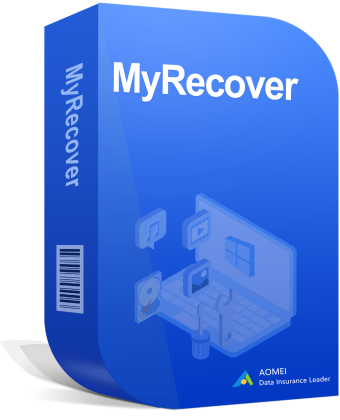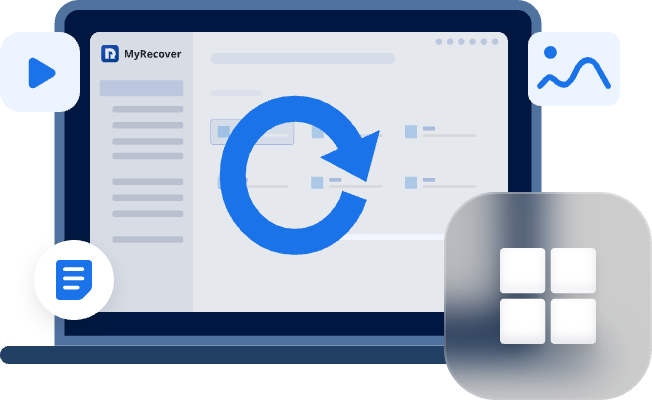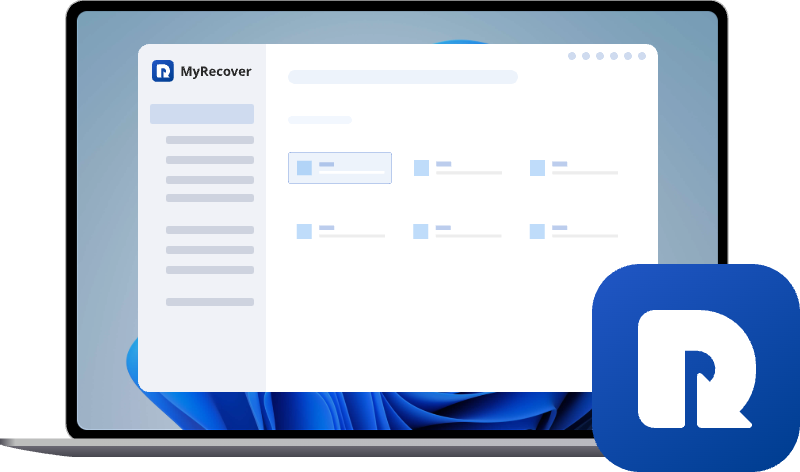Windows 10 There Is a Problem With This Drive? Repair It Now!
Facing the "windows 10 there is a problem with this drive" alert? Learn what it means and why there was a problem repairing this drive. Explore practical fixes using built-in tools, file recovery options, and maintenance tips to keep your storage devices healthy.
There is A Problem With This Drive in Windows 10/11
There is a problem with this drive. Scan says it's not
I have a WD My Book 25EE USB Device and I get an error a couple of times a day.
When I run the scan it says there is no problem!
Why do I get this error?
Edition Windows 10 Pro
Version 21H2
Installed on 2020-09-09
OS build 19044.1706
Experience Windows Feature Experience Pack 120.2212.4170.0
- Question from www.tenforums.com
Suffering from the Windows 10 message “There is a problem with this drive when plugged into a USB flash drive or external hard drive. Scan the drive now and fix it.”? Will my files get lost? How to fix a corrupted hard drive? Don't worry, in this detailed guide, we’ll unpack what this message really means, why it appears, and most importantly, how you can resolve it and recover your files.
Why Does Windows 10 USB Show "There Is a Problem With This Drive"?
The alert typically indicates that Windows has detected irregularities or potential corruption in your drive's file system. When you encounter this message, several factors could be at play.
⭕ File System Errors.
⭕ A failing USB port.
⭕ Faulty cable.
⭕ Physical damage to the drive.
⭕ Power surges.
⭕ Outdated drivers.
Recover Files Before Any Operation
If you still have access to this USB, external hard drive, or other devices, it’s very important to back up your files to another safe location. You can directly copy files to another directory in case of data loss. On the other hand, if you can’t access the drive that shows the “There is a problem with this drive” error, you have to use professional data recovery software to recover files directly instead of manual recovery.
Fortunately, the Windows data recovery software MyRecover is your best choice. With MyRecover, you can get the following benefits:
- High Recovery Success Rate. MyRecover is designed to retrieve lost files effectively from a variety of situations, including accidental deletion, formatted drives, virus attacks, and system crashes.
- Supports Multiple Storage Devices. It works with internal HDDs, SSDs, USB flash drives, external hard drives, SD cards, and other storage media.
- Wide File Type Compatibility. MyRecover supports more than 200 file types, including documents, photos, videos, audio, emails, archives, and system files. This ensures comprehensive data recovery.
- User-Friendly Interface. The software features a simple, intuitive interface. Even beginners can perform scans and recover files in just a few clicks without technical expertise.
- Quick Scan and Deep Scan Options. It offers both quick scans for recently deleted files and deep scans for severely corrupted or formatted drives, increasing the chances of full data recovery.
- Preview Before Recovery. You can preview files before recovering them, allowing selective recovery and avoiding unnecessary data restoration.
Thus, how to recover files from the drive that shows “There is a problem with this drive. Scan the drive now and fix it” with MyRecover? Here is how:
1. Connect your drive to the computer. Launch MyRecover after installing it on your computer.
2. Tap Disk Data Recovery, choose the problematic drive, and hit Scan.
3. Hit OK when it’s done.
4. Preview and choose the files, and hit Recover.
5. Select a safe location to save these recovered files.
- Tips:✎...
- With MyRecover Professional, you can recover unlimited files without worrying about the data size.
- To recover files from unlimited computers, MyRecover Technician can resolve your problem.
After recovering files from the drive showing “There is a problem with the drive. Scan the drive now and fix it”, you can fix the error now.

- Recover Deleted Files Easily with Simple Clicks
- 1000+ File Formats Supported
- Support HDD, SSD, External Hard Drive, USB Drive, SD Card, etc.
- Quickly Find Files Using File Types, Name, Size, etc.
- Preview Files Before Recovering
- Recover Unlimited Data
How to Fix The Drive Showing “There is a Problem with The Drive”?
Don’t worry; here are some solutions to help you fix it now. Let’s get started.
Way 1. Scan and Fix
When Windows displays the message "There is a problem with this drive. Scan the drive now and fix it", you can hit it to basically offer to check and repair the drive's file system automatically. This feature can often resolve minor issues.
Windows has a built-in repair feature known as Error Checking that can scan and fix minor drive errors. Here's how to use it:
1. Connect the problematic USB or external drive.
2. Open This PC and right-click the affected drive.
3. Choose Properties > Tools > Check under the "Error Checking" section.
4. Click Scan and repair drive.
Besides, you can also hit Scan and fix when your drive shows “There might be a problem with some files on this device or disc. This can happen if you remove the device or disc before all files have been written to it” to get the same effect.
Once complete, Windows will fix the detected file system issues automatically. This process often resolves the "There is a problem with this drive" error.
Way 2. CHKDSK Command
If the error persists, Command Prompt offers more control through the CHKDSK command.
1. Press Windows + S, type cmd, and run it as an administrator.
2. Enter the following command and press Enter:
chkdsk X: /f /r /x
(Replace "X" with your drive's letter.)
CHKDSK will find and repair bad sectors, as well as recover readable data where possible.
Way 3. Check USB Connections
If your USB shows “There is a problem with this drive” in a Windows 11 or 10 computer, it’s often tied to improper removal or driver issues. Thankfully, these can be fixed quickly.
Sometimes the fix is as simple as plugging the drive into another port. If the problem disappears, your USB port might be failing. If not, try updating the USB driver:
Way 4. Update Disk Drivers
Updating disk drivers can fix the error sometimes. You can try this:
1. Press Windows + X and select Device Manager.
2. Expand Disk Drives and right-click your USB device.
3. Choose Update Driver > Search automatically for drivers.
This ensures Windows communicates properly with your storage device.
Way 5. Enable Quick Removal
If you're someone who easily forgets to safely eject removable storage devices before disconnecting them, you have to enable Quick Removal. Then your drive is always ready to be removed safely.
This is device-specific. Enabling Quick removal will do so only for that device, not all removable devices you connect.
1. Right-click Start and click Device Manager.
2. Expand the Disk drives dropdown. Right-click your USB and click Properties.
3. In the Policies tab, select Quick removal, then click OK.
Way 6. Format Drive as NTFS
Sometimes, if your USB drive was formatted as exFAT and FAT32, it will prompt you with the error message. So, you can format it to NTFS to bypass the error.
1. Open a CMD window as administrator.
2. Type the following commands one by one with Enter after each one:
diskpart
list disk (it will list all drives. Identify the USB drive number)
select disk n (replace n by the USB drive number obtained with list disk)
clean
create partition primary
select partition m (replace m with the right number of the partition)
active
format fs=ntfs
assign letter=g
exit (to exit diskpart)
What to Do When “There Was a Problem Repairing This Drive” Appears
Sometimes, when you try to fix the error, you might encounter another message: “There was a problem repairing this drive. Windows was unable to repair the drive. Close this dialog box, and then try to repair the drive again”.This means Windows was unable to fix the detected issues automatically.
If you got this error message, it’s usually because the drive’s file system is too damaged. Here’s what you can do:
- Run CHKDSK manually as shown earlier.
- Try a different computer to see if the drive is accessible.
- Use professional recovery tools like MyRecover to retrieve your files before reformatting the drive.
When CHKDSK alone isn’t enough, combining it with the SFC (System File Checker) command can help repair corrupted system files that interfere with disk repair.
1. Open Command Prompt as Administrator.
2. Type:
sfc /scannow
After it completes, restart your computer and try CHKDSK again.
FAQs About "Windows 10 There Is a Problem With This Drive"
Q: What does “There is a problem with this drive” actually mean?
A: It means Windows detected potential corruption or file system errors on your drive. The system suggests scanning to prevent data loss. This issue can occur with USBs, SD cards, or even internal drives.
Q: Should I click “Scan and fix” when I see “There is a problem with this drive, Scan the drive now and fix it”?
A: Yes, if the data isn’t mission-critical or already backed up, scanning can help Windows repair minor errors automatically. If you’re worried about losing data, back up files first or use MyRecover to extract them safely before scanning.
Q: Why do I keep seeing “There is a problem with this drive” every time I plug in my USB flash drive?
A: This usually happens if the USB wasn’t properly ejected last time or if the port/cable is faulty. It may also signal that the drive’s file system needs a scan. Always safely eject before removal to prevent reoccurrence.
Q: What should I do when “There was a problem repairing this drive” appears?
A: This indicates Windows failed to fix the issue automatically. Run CHKDSK or SFC manually. If that doesn’t work, use MyRecover to restore files and then reformat the drive.
Q: What does “There was a problem repairing this drive. Windows was unable to scan the drive” mean?
A: It means the damage is too severe for Windows’ built-in repair tools. The file system might be deeply corrupted. In such cases, recovery software like MyRecover is your best bet before attempting to format.
Q: Can I lose data if I ignore the “There is a problem with this drive” message?
A: Yes, ignoring it can lead to data corruption or complete drive failure over time. Windows shows this alert for a reason — to warn you before permanent loss occurs. Always act promptly when you see it.
Q: Is it possible to recover data after reformatting the drive?
A: Absolutely. MyRecover can scan reformatted drives and restore deleted partitions or files, provided new data hasn’t overwritten the old sectors. Just ensure you stop using the drive immediately after formatting.
Q: How do I prevent “There is a problem with this drive” from happening again on Windows 10?
A: Always eject drives safely, keep Windows updated, and perform regular disk checks. Using surge protectors and avoiding abrupt shutdowns also helps maintain drive health.
Final Thoughts
The Windows 10 “There is a problem with this drive” error can be frustrating, but it’s not the end of the world. Most of the time, it’s just Windows’ way of warning you about potential drive issues before they become serious.
If built-in tools can’t fix it, MyRecover offers a reliable, easy-to-use solution for retrieving lost data.
Remember: prevention is better than a cure. Keep your drives healthy, your system updated, and your files backed up — and you’ll rarely face this issue again.


